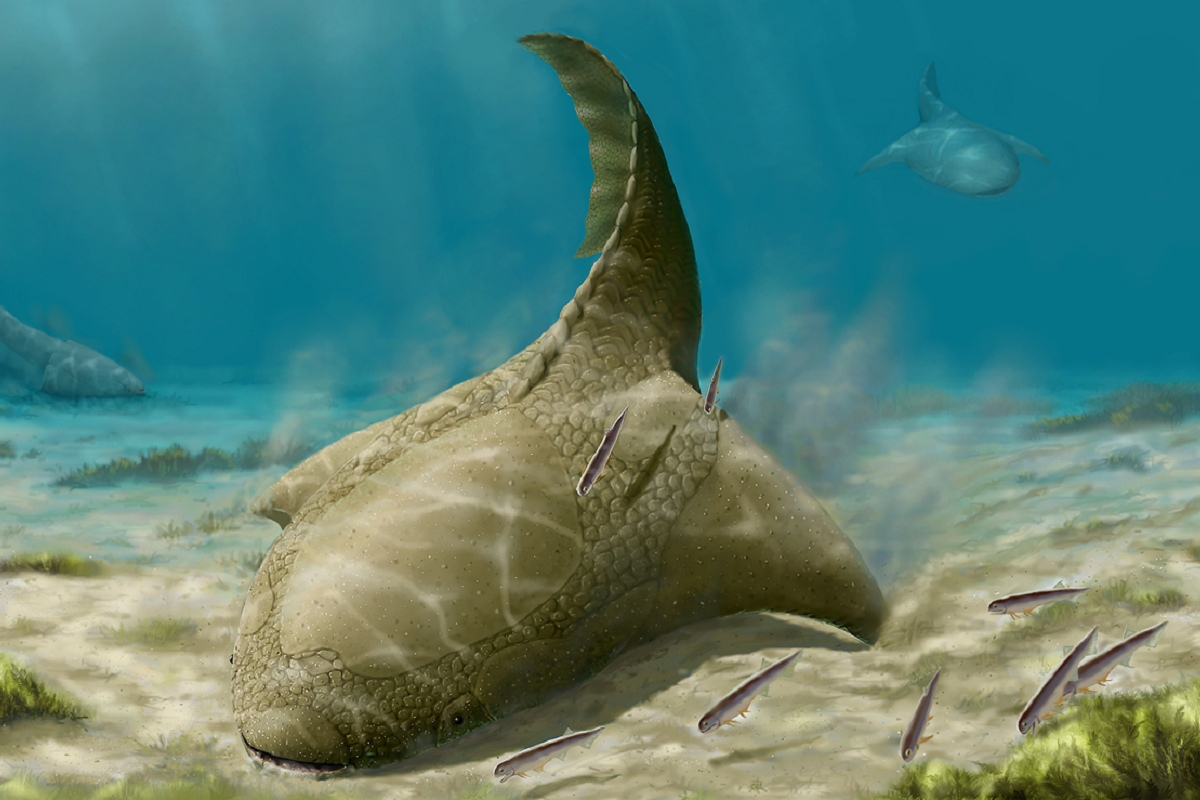Phylogenetic relationships of Psammmosteida — early jawless vertebrates

The paleontologis from St Petersburg University Vadim Glinskiy has developed an evolutionary tree of the psammmosteids that are early jawless plated vertebrates.
These ancient marine animals that are distant relatives of the lampreys lived in the Devonian about 390 years ago. They could reach 2 metres in length and are therefore considered to be the largest jawless animals in our history. The study is published in Biological Communications.
The psammmosteids resemble demersal skates, although the former swam using only a caudal fin. The side “fins” were fixed wings of their plate that were used to move and to rest on the sea floor. Presumably, their diet consisted of plankton, and they could be found in the continental shelves.
Today, the fossils of the body and skeleton of psammmosteids and numerous pallets can be found in the Devonian rocks in the Northern hemisphere, primarily in Europe, European part of Russia, and the Arctic, especially in Severnaya Zemlya and Antarctic Canada. Interestingly, in the Devonian all these parts of the continents were covered by sea and were near the equator. The psammmosteids therefore lived in the tropical waters. These ancient animals inhabited the Earth for about 35 mln years and were surprisingly different in shape.
To study the origin and evolution of psammmosteids the scientist used new paleontological data and up-to-date phylogenetic methods: a cladistic analysis that is among the most reliable tools in phylogenetics and systematics. The method has never been used before to study all group of psammmosteids. This approach allows to identify the degree of relationship between the species in the group and closest relatives of psammmosteids among the plated jawless animals.
“I managed to compose a new matrix of characters of outer and inner structures of the plates: in particular, a changing form of the spinal plate or other properties of its microstructure, — said the scientist. — All data was encoded to analyse by the methods of mathematical statistics. 48 species of ancient jawless were encoded, among them 38 species are psammmosteids. It is important to take into account the characters of the closest relatives and an ancestor of the group. Thus we could identify the primitive and advanced states of the encoded characters of psammmosteids”.
Based on the analysis of the encoded matrix, the specially designed software built evolutionary trees, i.e. cladograms. After the research findings were analysed, it was necessary to revise the classification of psammmosteids, and the scientists introduced two new genera: Vladimirolepis and Elgaia. They were named in honour of the Estonian paleonthologists Vladimir Paul and Elga Mrk-Kurik who had studied them before. Moreover, the scientists revised the families Pycnosteidae and Psammosteida and opened two new sub-families in the family of Psammosteida.
The research findings proved one of the oldest hypotheses of how the psammmosteids originated: their closest relative ancestors are Protopteraspis that are jawless animals whose plate resembles a torpedo and they could be found in deeper part of the ocean.
SPbU researcher and paleontologist Vadim Glinskiy
“This idea was proposed as early as in 1990s by French and American scientists headed by Alan Blick. Today the hypothesis has been proved by the cladistic analysis. We have also revised the systematics of the psammmosteids. Our research findings could shed light on the origin and diversity of this enormous group of the ancient jawless plated animals”, — said Vadim Glinskiy.
Our knowledge in diversity of the jawless can help us identify the age of the Old Red Sandstone, says the scientist. “Presumably, the unique structure of their body can inspire us to create a glider to use it in water and monitor the ecological state of the ocean floor”, — says the paleonthologist.

